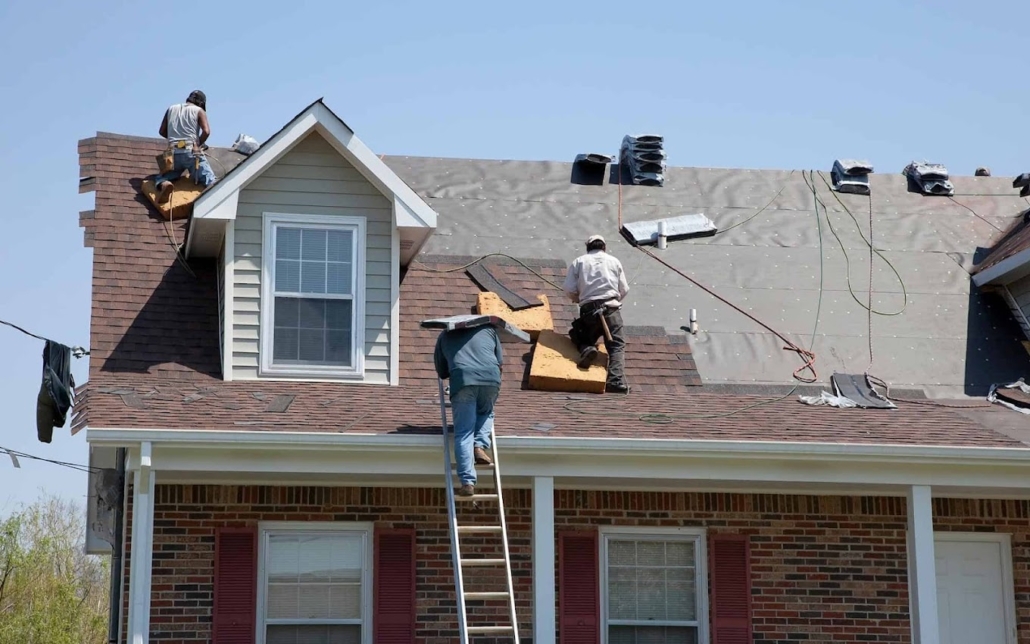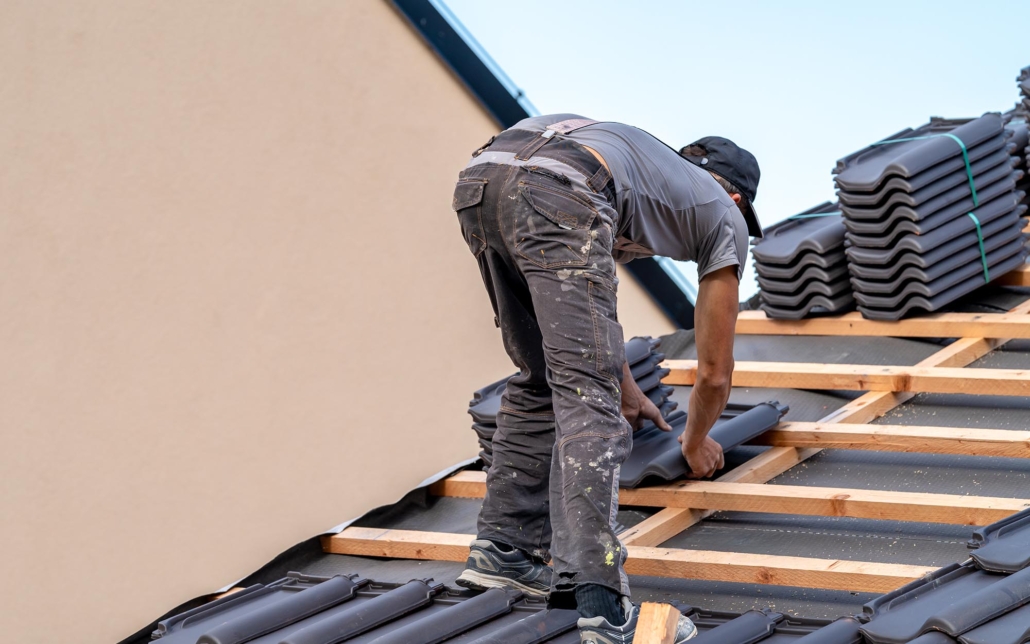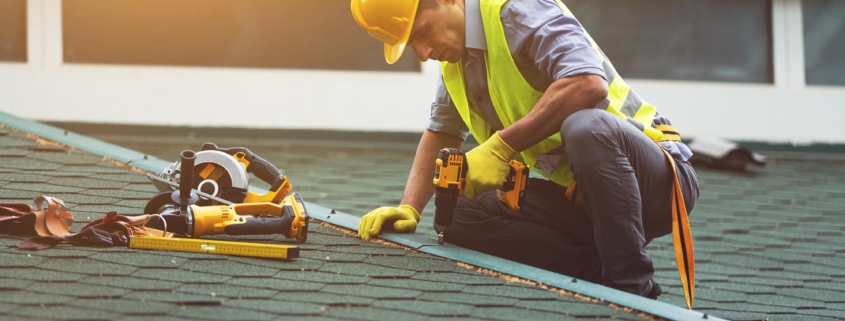Your Insurance Roof Replacement in San Antonio Questions Answered
Table of Contents
San Antonio homeowners face unique roofing challenges due to the city’s intense heat, severe thunderstorms, and occasional hail damage.
When your roof sustains damage, navigating the insurance claim process can feel overwhelming. Understanding your coverage, knowing what to expect, and having the right information can make the difference between a smooth replacement and a frustrating experience.
Understanding Your Roof Insurance Coverage in San Antonio
Most homeowners insurance policies in Texas cover roof damage caused by sudden and accidental events, commonly referred to as “covered perils.” In San Antonio, the most frequent causes of roof damage include hail storms, wind damage from severe weather, and fallen trees during storms.
Your standard homeowners policy typically covers these scenarios, but the extent of coverage depends on several factors.
The age of your roof plays a crucial role in determining your coverage. Insurance companies often use different valuation methods based on roof age.
For roofs less than 10 years old, you’ll likely receive replacement cost value (RCV), which covers the full cost of replacing your roof with similar materials. Roofs between 10-20 years old may receive a depreciated amount, while roofs older than 20 years might only qualify for actual cash value (ACV), which factors in depreciation and wear.
Your deductible amount significantly impacts your out-of-pocket expenses. Texas allows insurance companies to use percentage deductibles for wind and hail damage, typically ranging from 1% to 5% of your home’s insured value.
For a home insured at $300,000 with a 2% wind/hail deductible, you’d pay $6,000 before insurance coverage kicks in.
People Also Read : Property Damage Insurance Claims Guide for Converse, Texas

When Does Insurance Cover Roof Replacement?
Insurance companies don’t automatically approve roof replacement for every claim. They evaluate the extent of damage and determine whether repairs are sufficient or if full replacement is necessary. In San Antonio’s climate, certain types of damage are more likely to warrant complete replacement.
Hail damage is particularly common in the San Antonio area, especially during spring and early summer months. When hail stones are large enough or the storm is severe enough, they can cause granule loss, exposed mat, cracking, and bruising to asphalt shingles.
Insurance adjusters look for specific indicators of hail damage, including the size and pattern of impacts, damage to gutters and other exterior components, and the overall condition of the roofing material.
Wind damage from severe thunderstorms can lift, curl, or completely remove shingles. In Texas, sustained winds over 70 mph or tornado activity can cause extensive roof damage that requires full replacement.
Insurance companies typically approve replacement when the damaged area exceeds a certain percentage of the total roof surface, usually around 25-30%.
Age-related wear and maintenance issues, however, are not covered by insurance. If your roof is failing due to normal aging, poor installation, or lack of maintenance, you’ll need to pay for replacement out of pocket. This is why regular roof inspections and maintenance are crucial for San Antonio homeowners.
The Insurance Claim Process Step-by-Step
Filing a successful roof replacement claim requires careful documentation and timely action. The process typically begins immediately after you notice damage, and prompt reporting can significantly impact your claim’s success.
Start by documenting the damage with photographs from multiple angles, both close-up and from a distance. Take pictures of the damaged areas, any debris, and other affected parts of your property. If it’s safe to do so, photograph the roof from ground level, but never attempt to climb onto a damaged roof yourself.
Contact your insurance company as soon as possible to report the claim. Most insurers have 24/7 claim reporting hotlines, and many now offer mobile apps for submitting initial claims. Provide them with the date of the damage, a description of what happened, and your preliminary assessment of the damage.
Your insurance company will assign an adjuster to inspect your roof and assess the damage. This inspection typically occurs within a few days to a week after filing your claim, depending on the volume of claims in your area. During busy storm seasons in San Antonio, this timeline may extend.
While waiting for the adjuster, obtain estimates from reputable local roofing contractors. Having multiple estimates helps you understand the scope of work needed and provides leverage during negotiations with your insurance company. Choose contractors who are licensed, insured, and familiar with insurance claim processes.

Working with Roofing Contractors During Insurance Claims
Selecting the right roofing contractor can make or break your insurance claim experience. In San Antonio’s competitive roofing market, not all contractors are created equal, and some may not have your best interests in mind.
Look for contractors who specialize in insurance work and have experience dealing with major insurance companies. These professionals understand the claims process, know how to document damage properly, and can advocate for you during adjuster meetings.
They should be willing to meet with your insurance adjuster and provide detailed estimates that match insurance industry standards.
Avoid contractors who offer to waive your deductible or guarantee that insurance will cover everything. These practices are illegal in Texas and can jeopardize your claim. Similarly, be wary of door-to-door solicitors who appear immediately after storms. While some legitimate contractors do storm work, many are unlicensed or from out of state.
A reputable contractor should provide a detailed written estimate that itemizes materials, labor, and other costs.
They should also be willing to work with your insurance company’s approved amount while ensuring quality workmanship. If there’s a significant discrepancy between the contractor’s estimate and the insurance settlement, the contractor should be able to provide supplemental documentation to support the higher amount.
Common Challenges and How to Overcome Your Insurance Roof Replacement in San Antonio Questions Answered
San Antonio homeowners often encounter specific challenges during the roof replacement claim process. Understanding these potential obstacles helps you prepare and respond effectively.
Claim denials are frustrating but not always final. Insurance companies may deny claims for various reasons, including insufficient damage, excluded perils, or policy violations. If your claim is denied, carefully review the denial letter and understand the specific reasons. You have the right to request a second inspection or hire a public adjuster to advocate for your interests.
Underpayment is another common issue. Insurance companies sometimes provide settlements that don’t fully cover replacement costs, especially in markets with rising material and labor costs. When this happens, work with your contractor to provide additional documentation supporting the higher costs.
This might include updated material prices, evidence of additional damage discovered during work, or proof that local building codes require upgrades.
Delays in processing can occur during peak storm seasons when insurance companies are handling high volumes of claims. While frustrating, these delays are often unavoidable.
Stay in regular communication with your adjuster and document all interactions. If delays become excessive, consider escalating your claim within the insurance company or seeking assistance from the Texas Department of Insurance.
Maximizing Your Insurance Settlement
Several strategies can help ensure you receive the maximum settlement possible for your roof replacement claim. Preparation and documentation are key to success.
Maintain detailed records throughout the process. Keep copies of all communications with your insurance company, contractor estimates, receipts for temporary repairs, and photographs of damage. Create a timeline of events and document any additional damage you discover.
Understand the difference between initial settlements and final payments. Many insurance companies issue initial payments that cover immediate needs but hold back funds until work is completed.
This holdback, often called recoverable depreciation, is released upon proof of completed work and payment to contractors.
Consider hiring a public adjuster if your claim is complex or if you’re uncomfortable negotiating with the insurance company. Public adjusters work for you, not the insurance company, and can often secure higher settlements.
They typically charge a percentage of the settlement increase, but this cost may be worthwhile for large or complicated claims.

Preparing for Future Roof Issues
Once your roof replacement is complete, take steps to protect your investment and prepare for future potential claims. Regular maintenance and documentation can help ensure your next insurance experience goes smoothly.
Schedule annual roof inspections, especially after severe weather events. Early detection of minor issues can prevent major problems and provide documentation of your roof’s condition over time. Keep records of all maintenance, repairs, and inspections.
Review your insurance policy annually and understand any changes in coverage or deductibles. Consider whether increasing your coverage limits or adjusting your deductible makes sense based on current replacement costs in the San Antonio market.
Understanding your insurance coverage and the claim process empowers you to make informed decisions when roof damage occurs.
While dealing with roof replacement can be stressful, proper preparation and knowledge of your rights as a policyholder can help ensure a successful outcome. Remember that insurance companies are businesses, but they also have contractual obligations to honor valid claims under your policy terms.
We’re Here When You Need Us Most
When disaster strikes, time is critical. That’s why our experienced technicians are always nearby—ready to respond, assess, and restore. As a locally trusted team, Prime Time Restoration is committed to protecting what matters most—your home or business.
📞 Don’t wait. Call Prime Time Restoration at (210)-656-3469
🕒 Available 24/7 – Because disasters don’t wait


